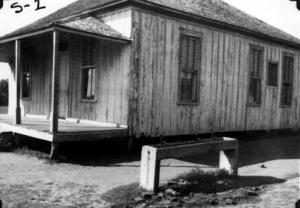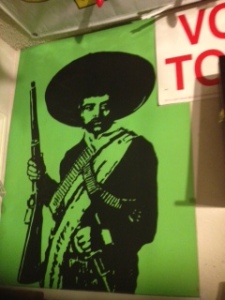Institutionalization of Violence
Through law enforcement, Mexicanos were maintained as a labor pool for agriculture, mining, railroads, and domestic labor. Law enforcement such as the Texas Rangers and local police terrorized, threatened, and beat Mexicanos. Texas had a fearful reputation for its abuses towards Mexicanos. In a New York times article from 1925, it was stated that 400 Mexicans were shot in the Río Grande Valley, that it was “open season on Mexicans” for the Texas Rangers. There were even lynching postcards from the 1800s-1910 where Mexicans were shown being roped by law enforcement. In fact, 473 out of every 100,000 Mexicans in the Southwest died from lynchings between 1848 and 1870. Both Mexican-Americans and Mexican immigrants were equally targeted by law enforcement and were systematically abused by police and other law enforcement. Mexicano experiences with discrimination and hate crimes has been compared to African American experiences under Jim Crow laws in the South, thus was born the term “Juan Crow.”

Mexican Ward School
http://www.trumanlibrary.org
School Conditions
Mexicanos attended separate schools, Mexican ward schools, in a Mexicano district that was controlled by Anglos. Attendance was not encouraged, the curriculum was inferior, the dropout rate was very high, and students’ records wouldn’t transfer between schools. Teachers were paid 1/6 the salary of a teacher at an Anglo school. By the second or third grade, most students would drop out to work full time to help support their family by working as farm laborers. A supreme court case in 1926 stated that Mexicans had to be educated, but this ruling was designed to provide a basic education, not upward mobility. This system discouraged students from exiting the labor circuit so that an inexpensive migratory labor pool could be maintained. Parasitism was practiced by the Anglo school districts as well: when a Mexican child did not attend the ward school (which was encouraged by the Anglo power structure), the decreased attendance led to kickbacks for the Anglo school, thus the Anglo school drew money from the Mexican ward schools by encouraging students to drop out and work.

Segregation Era Sign
http://www.cah.utexas.edu
Segregation
Towns and schools were segregated. Theaters were also off limits to Mexicanos until 1964. Restaurants refused to serve “Spanish or Mexicans.” Mexicano schools, neighborhoods, and amenities were segregated from those of Anglos. In fact, the boardwalk was a street in towns that Mexicans were not allowed to cross until sometime in the 1950s. The barrios, neighborhoods for only Mexicanos, had curfews. Mexicanos were not allowed in public pools because they were seen as dirty. This medicalization of the population dehumanized Mexicanos and thus laborers were seen as property. By segregating Anglos and Mexicanos, Mexicanos were maintained as second-class citizens and suffered the status of being seen as second-class citizens. Segregation also led to terrible ramifications in the school system: Mexicanos were educated differently and did not prepare or allow for Mexicano students to become educated, participatory citizens. Mexicanos were educated on the basis of de facto segregation by supposed language deficiencies. It was assumed that if a child spoke Spanish at home that they were not proficient enough in English to attend Anglo schools, thus Mexicanos all attended Mexican ward schools. The first step towards school desegregation occurred in Del Río, Texas: the Salvatierra case. This case was overturned, but it was the first step in beginning a legal campaign against school segregation.
Sources: Dr. Miguel Leatham’s lectures from a Mexican-American Folklore Spring 2013 class; Anglos and Mexicans in the making of Texas: 1836-1986 by David Montejano; Mexican Americans: Leadership, Ideology, & Identity, 1930-1960 by Mario T. Garcia

This is so true I was around some of the racial treatment. We couldn’t even go in stores with out a person following us or watching us. I remember traveling to Texas and inn Missouri we stop to get gad for the car. I saw a sign hanging up that said only white could enter. My mom told me we go this way I was small in first grade but I remember this because I could read. And asking my mom what it meant. There were other things and I was so confused about about l this. But I knew it was wrong.
Finally, finally, an article in regards to the injustice that occurred in the former territories that were part of the nation of Mexico. Article 8 of the Treaty of Guadelupe Hidalgo states citizenship. Citizenship of the United States.
Obviously, the document is hypocritical in nature since the Hispanic Mestizo that are U.S. citizens has and continues to be viewed as second class citizens. A formal apology from the government of the United States to the descendants of those that the treaty affected is in order here for the injustice that occurred.